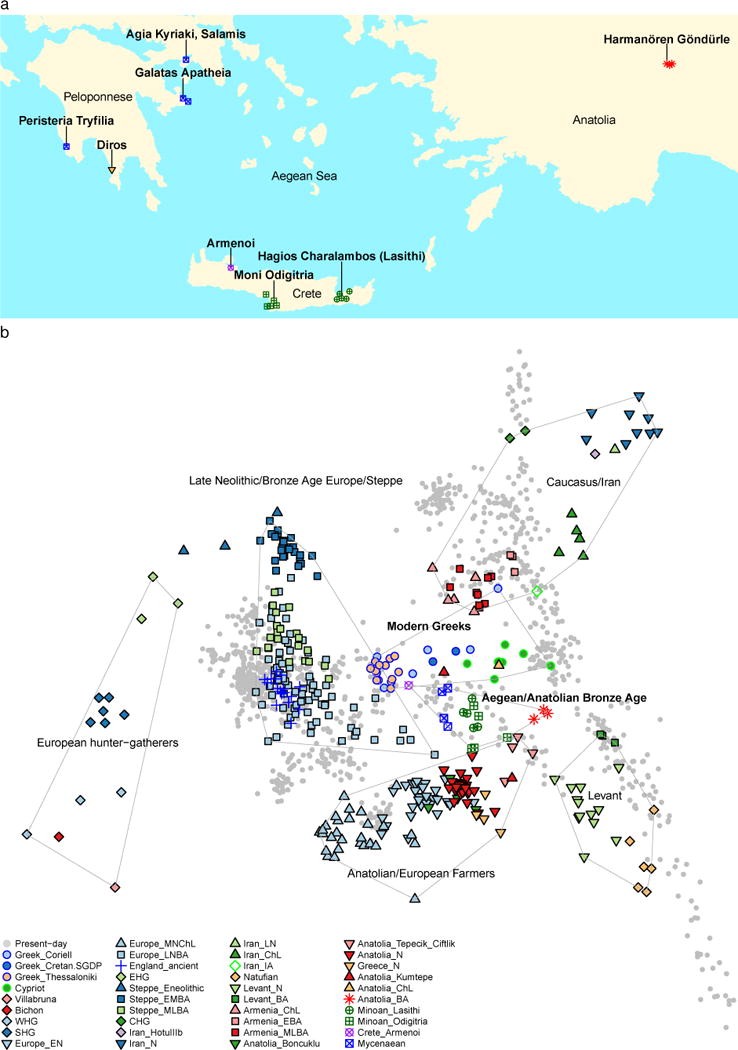The Mycenaeans and Minoans were two prominent Bronze Age civilizations in the Aegean. While genetically similar, key differences existed, raising the question: what did the Mycenaeans learn from the Minoans? This article delves into their relationship, exploring potential cultural transmissions based on archaeological and genetic evidence.
Minoan Influence on Mycenaean Culture: A Complex Relationship
Both civilizations flourished in the Aegean during the Bronze Age, the Minoans on the island of Crete and the Mycenaeans on mainland Greece. Archaeological evidence points to significant Minoan influence on Mycenaean culture, particularly in areas like:
Art and Architecture:
- Frescoes: Mycenaean palaces featured frescoes similar in style and technique to those found in Minoan palaces, suggesting the adoption of Minoan artistic traditions.
- Palace Structure: While Mycenaean palaces developed their unique characteristics, early architectural features show similarities to Minoan palatial complexes.
Religion and Rituals:
- Religious Iconography: Certain religious symbols and motifs appear in both cultures, hinting at shared beliefs or the adoption of Minoan religious practices by the Mycenaeans.
- Burial Practices: Some similarities in burial customs, such as the use of tholos tombs, suggest potential Minoan influence on Mycenaean funerary rituals.
Technology and Trade:
- Pottery and Craftsmanship: Mycenaean pottery styles evolved from earlier Minoan traditions, demonstrating a clear technological and artistic lineage.
- Maritime Trade: The Minoans were renowned seafarers, and evidence suggests the Mycenaeans adopted and expanded upon Minoan trade networks throughout the Aegean and beyond.
The Genetic Link: Shared Ancestry and Distinct Origins
Recent genetic studies provide further insight into the relationship between the Minoans and Mycenaeans. Analyses reveal that both groups shared a significant portion of their ancestry from Neolithic farmers of Anatolia. However, the Mycenaeans also possessed a distinct genetic component linked to populations from Eastern Europe and Siberia. This suggests a more complex population history for the Mycenaeans, potentially involving migration and admixture events that did not impact the Minoans.
Linear B and the Language Question
The decipherment of Linear B, the Mycenaean script, as an early form of Greek provides crucial evidence for cultural transmission. While Linear A, the Minoan script, remains undeciphered, some scholars believe it represented a different language, potentially a pre-Indo-European tongue. The adoption of a script adapted for Greek by the Mycenaeans indicates a significant cultural shift and potential influence from Indo-European speakers.
Conclusion: A Legacy of Innovation and Adaptation
The Mycenaeans likely learned a significant amount from the Minoans, adopting and adapting aspects of their art, architecture, religion, technology, and trade. However, the Mycenaeans were not mere imitators. They developed their unique cultural identity, blending Minoan influences with their own traditions and innovations. Genetic evidence supports this picture of cultural exchange and independent development, highlighting the complex interplay between these two Aegean civilizations. Further research promises to unravel more details about this fascinating period of history.

